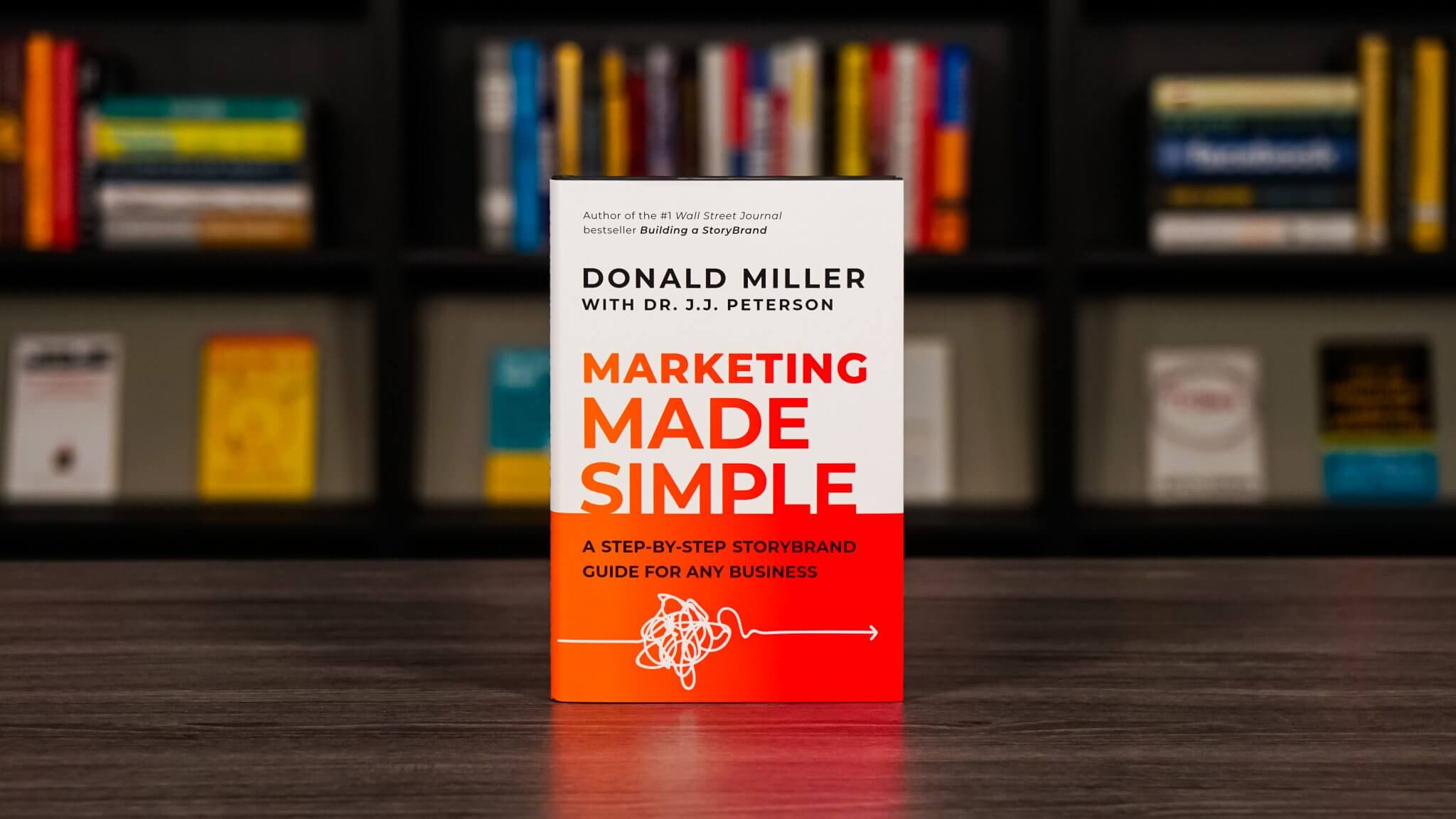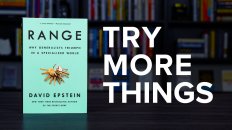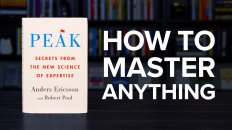A business can fail even if it offers a truly great product. It’s not enough just to build something that people want. You must also have an effective way to attract and convert customers.
Unfortunately, many entrepreneurs assume their product is an exception. They mistakenly believe that their idea is so good that it will just sell itself. So they’re caught off guard when their product later fails to attract meaningful attention. And, in some cases, this can result in the collapse of the business.
Marketing Made Simple explains how to create an effective sales funnel. It addresses the three stages for building customer relationships. And it provides actionable advice on how to produce the five marketing components needed to convert customers.
The Three Stages Of A Relationship
The three stages of a relationship are curiosity, enlightenment, and commitment. Understanding this process is helpful because it sets the stage for what a sales funnel must accomplish. The goal is to guide potential customers through each phase.
Stage 1: Curiosity
Curiosity begins with a subconscious process that identifies whether or not something can enhance the customer’s life. It’s a snap decision about the product, service, or brand and its potential to help them survive or thrive. At this stage, they’re only making one of two decisions: keep or discard.
When it comes to marketing, the headline on your website, the subject line of your email, or the elevator pitch for your idea must express how you can help customers.
Stage 2: Enlightenment
If curiosity gets people to pay attention to a brand, enlightenment invites them into a relationship. So, to move things forward, you must enlighten customers about how you can solve their problem in a way that helps them survive or thrive.
Consider using a long-form sales message, lead generator, live event, email campaign, or explainer video to enlighten potential customers.
Stage 3: Commitment
There are two principal reasons why customers do not place orders. First, brands ask for the sale too early, before customers progress through the first two stages. Second, they fail to ask for the sale at all. Therefore, the key is to invite customers to commit at the pace of a natural, healthy relationship.
People don’t want to be enlightened about something until they are curious. And, until they are enlightened about how you can help them thrive or survive, they will never commit. So you must help them progress through each stage in the correct order.
The Marketing Made Simple Checklist
A sales funnel is the foundation of an effective marketing strategy. It includes five components: a one-liner, a website, lead generators, nurture email campaigns, and sales email campaigns. These elements work together to guide potential customers through the three relationship stages.
You’ll start building curiosity by using a one-liner. Then take potential customers through the enlightenment stage with a website, lead generators, and nurture emails. And finally, you’ll ask them to make a commitment using a sales email sequence.
1. Create Your One-Liner
A one-liner is a concise statement that clearly explains what you offer. It’s the most powerful tool you can use to make potential customers curious about your brand. And it is composed of three parts—the problem, the solution, and the result.
Part 1: The Problem
Always start by describing the problem that your product solves. A clearly stated problem creates curiosity in what you have to offer. And it’s what helps potential customers decide whether or not you can help them survive or thrive.
Part 2: The Solution
Once the problem is defined, you must connect that problem with your solution. Avoid cute or creative language. Instead, focus on making it clear that your product or service can resolve the issue for customers.
Part 3: The Result
This final step resolves the tension created in step one. Here you must explain the benefit or outcome of using your product. Get clear on how the customer’s life will be improved when they use your solution.
Book Example: Dental Office For Kids
“(1) Most parents get stressed when they think about taking their child to the dentist. (2) At Kid’s Teeth, our fun and welcoming office puts kids at ease, (3) so they aren’t afraid, and their parents enjoy their dentist visit.”
My Example: Rick Kettner’s YouTube Channel
“ (1) Many entrepreneurs feel overwhelmed when starting or growing a business. (2) Rick Kettner distills helpful advice and proven tactics from the best business books, (3) so you can confidently take action to move your business forward.”
Once you refine your one-liner, you can put it on the back of your business cards, add it to your email signature, print it on the wall in your retail space, use it as a profile description on your social media accounts, and more.
2. Wireframe Your Website
Once a customer is curious about your solution, they need an opportunity to learn more about what you do. A website or landing page is a powerful tool for enlightening your customers about how you can help them.
Here are the nine sections to include in your website:
- The Header: Clearly explain what you offer in just a few words.
- The Stakes: Describe the pain and frustration that you will resolve.
- The Value Proposition: Add value to your offer by listing its benefits.
- The Guide: Introduce the brand or person that will solve their problem.
- The Plan: Reveal the path they must take to do business with you.
- The Explanatory Paragraph: Invite customers into a story using a long-form BrandScript (this section will also improve your SEO).
- The Video (optional): Reiterate your core message in a short video.
- Price Choices (optional): List divisions, options, or price choices.
- Junk Drawer: List everything that doesn’t fit in prior sections.
Aside from the header going at the top, there is no set order for these sections. You can arrange them in any order that makes sense for your product or service.
Note: The book contains detailed advice on how to craft the content for each section, so it’s best to review it when you’re ready to take action on this step.
3. Build A Lead Generator
Most of the people that visit your website are unlikely to return. Many will quickly forget about your brand and what you offer. So it’s essential to have a mechanism for capturing the contact information of potential customers.
Unfortunately, most visitors do not want to share their email address. Many treat this step as the equivalent of giving you $10 or $20. So you must offer them a strong incentive in the form of a free PDF guide, video series, product sample, or other lead-generator in exchange for their email address.
What A Great Lead Generator Can Do
A great lead generator: positions you as the customers’ guide, answers your clients’ questions, solves some of their problems, piques their interest, stirs a sense of reciprocity, builds trust in what you have to offer, challenges prospects to take a small action, and gives them a vision of a successful result they could experience.
The Title Must Attract Attention And Communicate Value
Here are examples of titles that have done very well:
- “Five mistakes people make with their first million dollars.”
- “Building your dream home: Ten things to get right before you build.”
- “Cocktail club: Learn to make one new cocktail each month.”
- “How to get your dogs to stop barking when people knock at the door.”
- “Five mistakes most managers make that are squashing productivity.”
Promote Your Lead Generator As You Would A Product
Consider spending more of your advertising budget on promoting your lead generators than even your products. They’re effective at leading to sales because they help customers move through the enlightenment stage. And they lead prospects into nurture and sales email campaigns.
4. Create A Nurture Campaign
The best way to continue building a relationship with potential customers is to send them regular, valuable emails. A nurture campaign will help you deliver continuous value to develop a deeper relationship with prospects or customers.
People may not want to buy your product right away. So your brand must be fresh in their mind when they’re ready. And a nurture campaign helps with this, even if subscribers don’t read all of the emails you send.
Focus On Creating Value For Your Subscribers
Every email message should help subscribers survive and thrive. Here are some things to consider when writing new emails for a nurture campaign:
- Solve a specific problem for your subscribers.
- Offer valuable information, access, or advice.
- Remind them that your product can help.
- Send customers back to your website.
Send At Least One Email Every Single Week
If you are not emailing potential customers every week, you’re risking being forgotten. So consider sending weekly announcements, tips & tricks, or notifications that create value for them. If you’re producing YouTube videos, podcast content, or blog articles, this is a great way to keep people updated and engaged.
5. Plug-In A Sales Campaign
While nurture campaigns are focused on adding value and building trust, a sales campaign should focus on closing the deal. It’s an opportunity to share the full story of how your solution will address their needs. And then to ask for the sale.
Many people use passive-aggressive tactics to sell their products. They talk about what they sell but never ask for the sale. This approach is weak, and it signals to customers that you don’t believe in your product.
You’ve already earned their interest with your one-liner, website, and lead generator. So, if you know your solution can help, you must confidently ask for the sale.
How To Create A Sales Campaign
Start by getting clear on the product that you are trying to sell. Unlike a nurture campaign, a sales campaign should focus on one thing. Even if you have multiple products that can help them, choose the one that you’re going to sell first.
Then identify the problem that your product solves. Remember, you’re not just selling a product. You’re selling the solution to a problem. If you forget the problem, the offer will fail to resonate with potential customers.
Here is a quick example of a sequence you can send over a 1-2 week period:
- Email 1: Deliver the lead magnet that you promised to send.
- Email 2: Identify the problem they face, empathize with their pain, and then introduce your product or service.
- Email 3: Feature short customer testimonials from existing customers.
- Email 4: Address an objection that prevents some people from buying.
- Email 5: Shift their paradigm by explaining how your product is different than any solution they may have tried in the past.
- Email 6: Simply ask for the sale. Don’t sell; just ask them to buy.
How To Prioritize Your Email Campaigns
Start by setting up your first lead generator so you can start attracting subscribers. Then begin a nurture campaign to maintain contact with those that sign up. Add new emails to this campaign as you come up with additional ways to provide value.
Finally, once you’ve had time to build out a sales campaign, schedule it to be sent out before the nurture campaign for all new subscribers. This way, it’s the first thing that people will receive once they sign up for your lead generator.
Note: The book has detailed advice on how to execute this strategy, and it covers many valuable insights that go well beyond what is covered here.
Beyond The Marketing Made Simple Book Summary

This summary of Marketing Made Simple is just a preview of how to build an effective sales funnel. It’s not a substitute for reading the book. That’s because the original text provides a much richer learning experience.
So if you’re a founder, entrepreneur, or marketer that is serious about building a sales funnel, it’s time to pick up a copy of the book. Marketing Made Simple is available from Amazon and Apple Books.
Are you looking for another great book? Consider checking out the best digital marketing books or the best social media marketing books to find your next great read.
You can also subscribe to The Rick Kettner YouTube Channel or The Rick Kettner Podcast to get updates about future book summaries and reading lists.


